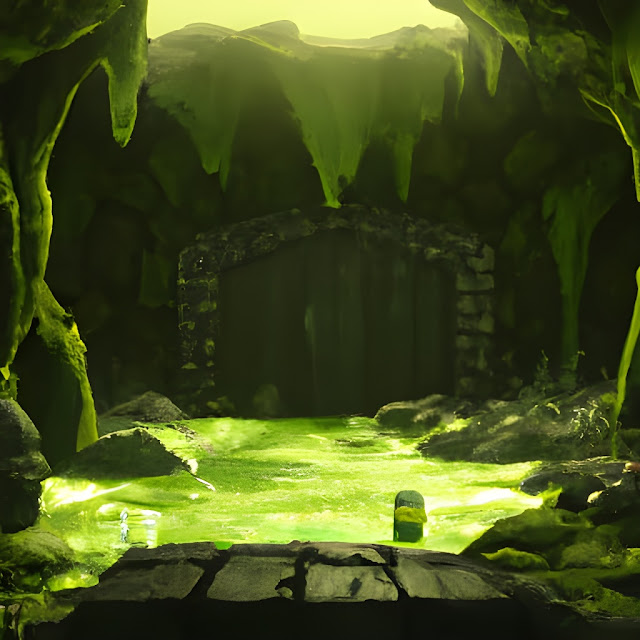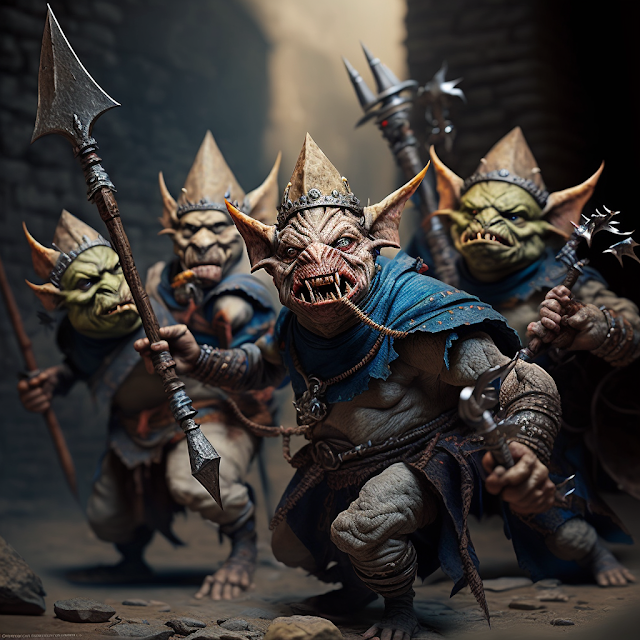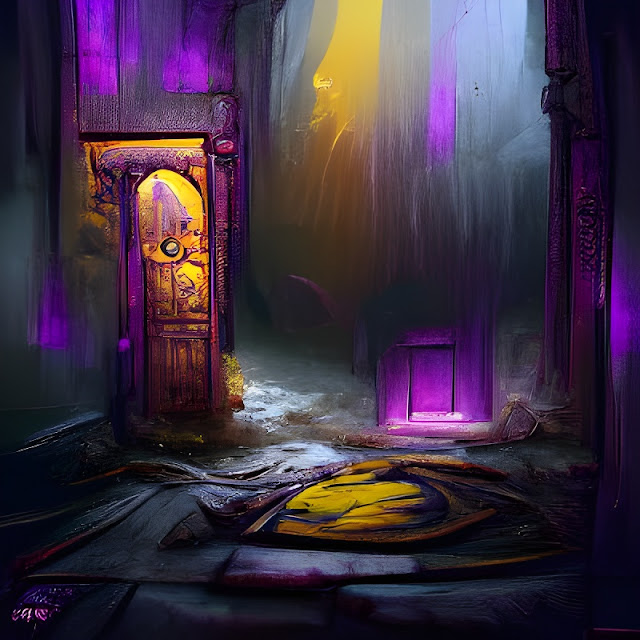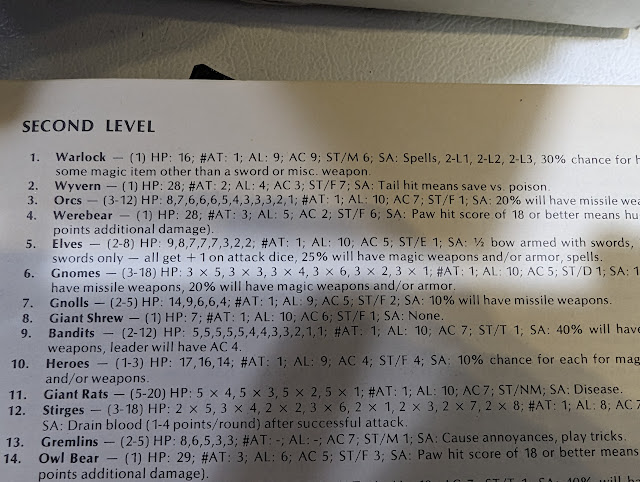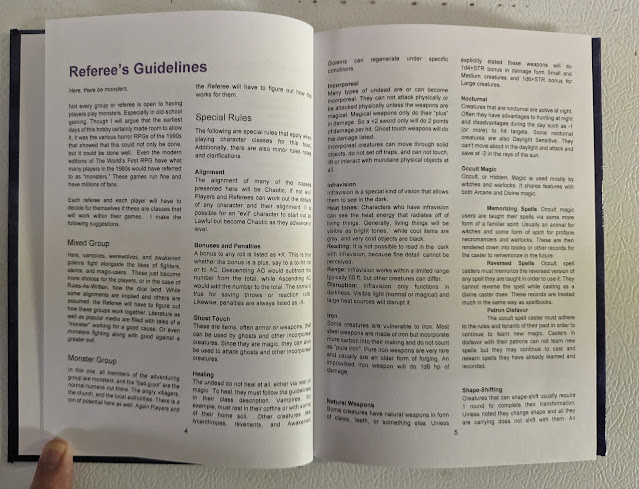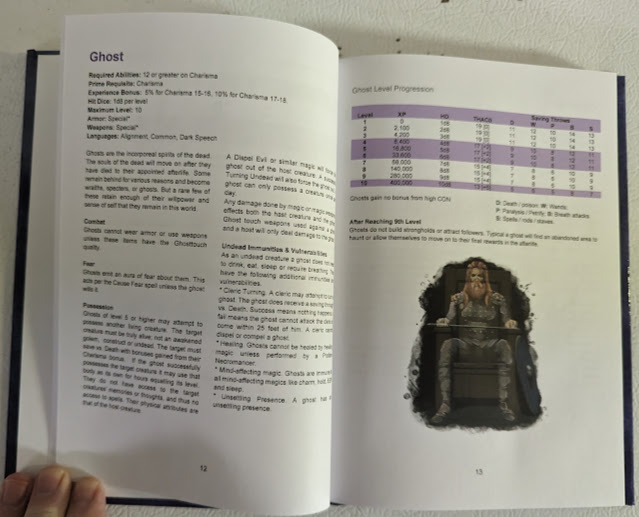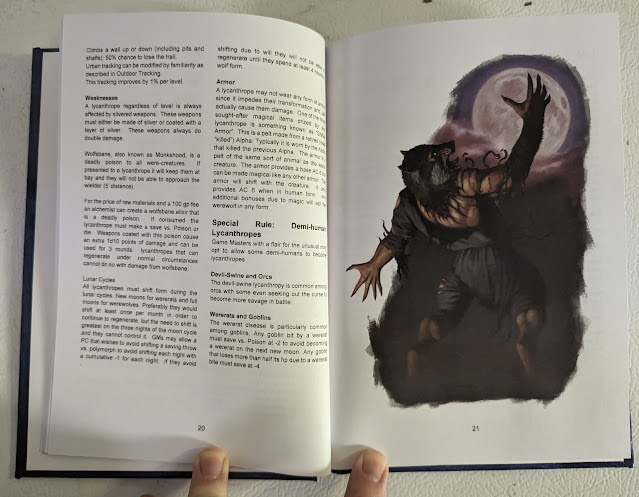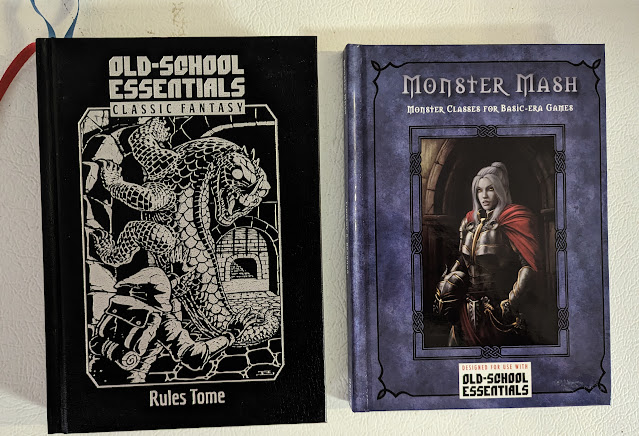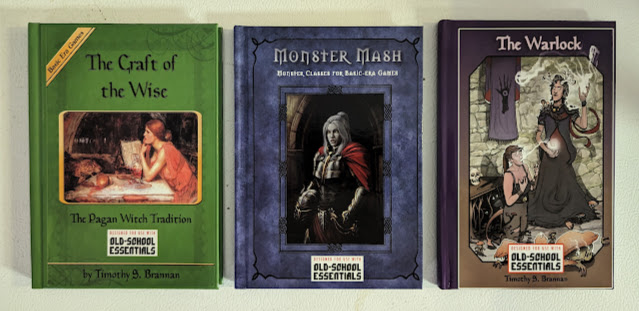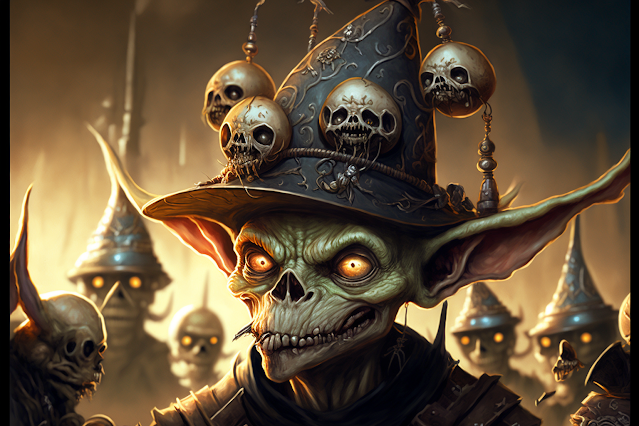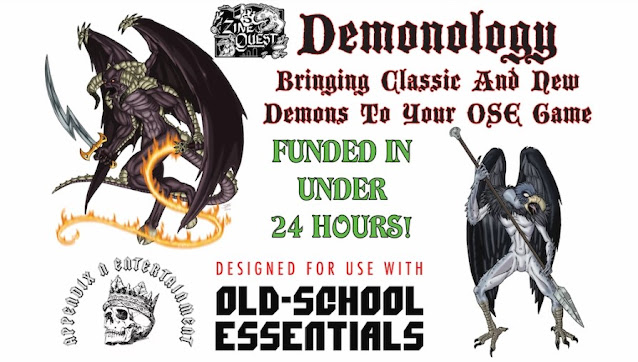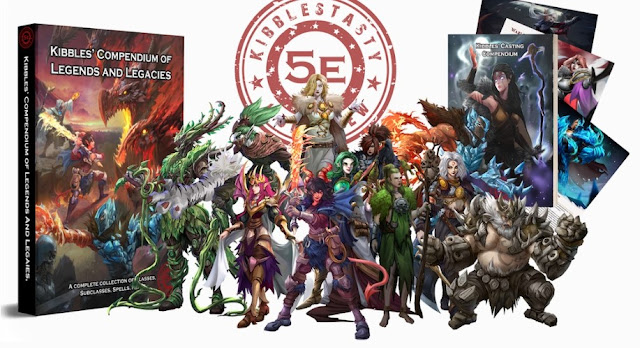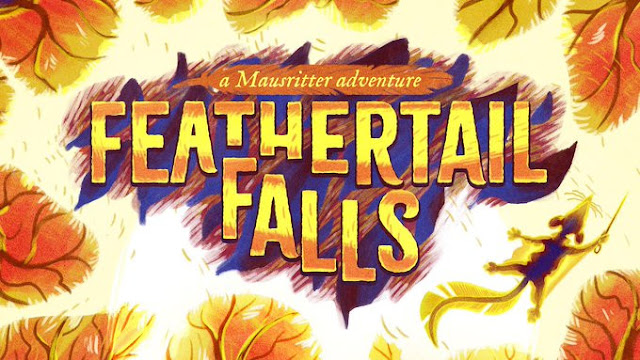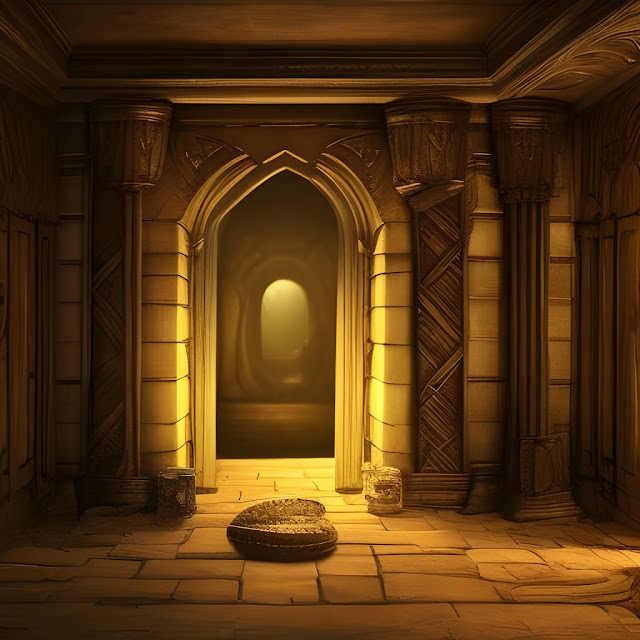1974 is an important year for the gaming hobby. It is the year that Dungeons & Dragons was introduced, the original RPG from which all other RPGs would ultimately be derived and the original RPG from which so many computer games would draw for their inspiration. It is fitting that the current owner of the game, Wizards of the Coast, released the new version, Dungeons & Dragons, Fifth Edition, in the year of the game’s fortieth anniversary. To celebrate this, Reviews from R’lyeh will be running a series of reviews from the hobby’s anniversary years, thus there will be reviews from 1974, from 1984, from 1994, and from 2004—the thirtieth, twentieth, and tenth anniversaries of the titles. These will be retrospectives, in each case an opportunity to re-appraise interesting titles and true classics decades on from the year of their original release.
—oOo—

It has been a decade since a party of heroic adventurers ascended into the Drachensgrab Hills in the humanoid-infested Pomarj peninsula and infiltrated the secret Slave Lord city of Suderham, only to be captured and cast into the dungeons below, bereft of any possession, including arms, armour, and all magical items. Undaunted, these heroes managed to escape the dungeons, reclaim their possessions, and confront the Slave Lords even as the volcano above Suderham erupted and the god known as the Earth Dragon took her revenge. Their brave efforts put an end to the scourge of the Slavelords along the Wild Coast, ensuring that no man, woman, or child feared capture and being thrown into life slavery and drudgery that would likely only end with their death. However, it appears that is not to be, for ten years they were last sighted, the yellow sails of the Slavelords have been unfurled again. In the ports along the Wild Coast the yellow sailed ships of the Slave Lords have unloaded their dreadful cargo and on the waters of the Woolly Bay they have struck at ship after ship and raided town after town. Yet, their ambition and reach has grown. They have been seen as far north as the waters of Nyr Dyv, the ‘lake of unknown depths’, most surely having sailed the length of the Solitaries in order to get so far. As the half-orc warlord, Turrosh Mak, has unified the bickering humanoid tribes of the Pomarj into a rapacious nation and conquered over half of the Wild Coast, there is a threat of old which seems to sail before him. The Slavelords of old have returned!
This is the set-up for
Slavers, one of the last supplements to be published by Wizards of the Coast for
Advanced Dungeons & Dragons, Second Edition and certainly the last campaign to be published for
Advanced Dungeons & Dragons, Second Edition. Published in 2000, this is a sequel to classic campaign for
Advanced Dungeons & Dragons, First Edition, which began life as the 1980 Open Tournament run by TSR, Inc. and would be published as the four part ‘Aerie’ or ‘A’ Series—
A1: Slavepits of the Undercity,
A2: Secret of the Slavers Stockade,
A3: Assault on the Aerie of the Slave Lords, and
A4: In the Dungeons of the Slave Lords. This would be collected in 1986 in
A1-4: Scourge of the Slavelords, before being later reprinted in 2013 as
A0-A4: Against the Slave Lords,which included the addition of a prequel module,
A0: Danger at Darkshelf Quarry. If
A1-4: Scourge of the Slavelords and
A0-A4: Against the Slave Lords can be considered to be ‘Old School’,
Slavers is anything but. The original quartet’s beginning as a tournament series of dungeons mark the ‘A’ Series as being tactical affairs, the activities of the Player Characters focused on taking direct action against the Slavelords, and that is even with the expansion of the original tournament adventures into full modules for sale.
Slavers opens up the world and plot of the ‘A’ Series, turning it into an investigative and strategic campaign across central Greyhawk as the Player Characters attempt to find clues to the Slavelord’s activities, allies, bases, and ultimately, their location.
Slavers has a plot, but it is not one that the players and their characters will necessarily adhere to as they go about their investigations. The Dungeon Master has the busy task of planting clues, directing the activities of the Slavelords and their allies as they become aware of the Player Characters’ activities, and responding to the players’ actions, for
Slavers is a very player driven campaign.
Slavers is designed to be played by a group of five to eight Player Characters of Fourth and Fifth Levels and is set in the World of Greyhawk. It is a standalone campaign, but is likely to involve some sea combat, so a supplement such as
Of Ships and the Sea, the ninth and last of the ‘Dungeon Master Guide Rules Supplement’ series will be useful. Similarly, the
Tome of Magic will be useful for its spells. In addition,
C2 The Ghost Tower of Inverness and
The Star Cairns are suggested as useful optional extras since the Player Characters are likely to be travelling nearby. Lastly, ‘See the Pomarj—and Die!’ from
Dragon Magazine#167 will provide extra background, but an appendix in the back of
Slavers greatly expands upon the region.
Slavers will take the Player Characters from the town foyers out into the waters of the Nyr Dyv and down the length of Selintan River out into Woolly Bay. Having first found hidden base on the shores of the Nyr Dyv, the Player Characters will find more hidden bases and Slavelord waystations along the coast of Woolly Bay, and there find more clues which point to the Slavelord operations as originating to the south. Following the clues will lead them deep into the peninsula of the Pomarj, much like the
A1-4: Scourge of the Slavelords and
A0-A4: Against the Slave Lords, in search of the secret capital of the Slavelords. Once located, the Player Characters can discover and confront the true power behind the Slavelords—the temple of the Earth Dragon. This is given as a ‘Suggested Adventure Outline’ in the opening chapter of
Slavers which presents ‘The Dungeon Master’s Notes’. As is clearly stated, “Preparation is required.” since the clues are not pre-written, only the primary locations and NPCs, along with further suggestions and ideas as to what might happen at those locations.
Slavers is divided into four chapters. The first is ‘The Land of Dyvers’, which covers that city and the Nyr Dyv, providing a history of the city and surrounding region, as well as detailed descriptions of both. It is accompanied by a table of random encounters and a breakdown of the slave raids across the area, and who is involved and in charge of them. These are supported by short rules for naval combat if the Dungeon Master does not have access to Of Ships and the Sea. The major Slavelord base, Slavers Cove, is fully written up as a location, as are the nearby Caverns of Blackthorn, home to a hidden lair of various humanoid species. ‘Dyvers Intrigues’ suggests many ways in which the Player Characters can become involved in the activities of the Slavelords. Perhaps investigating an assassination attempt on a priestess leading anti-shipping activity against the slavers, trying to find out why so many of the local Half-Orcs are being offered jobs on the Wild Coast, uncover the true nature of a new religion that has appeared in Dyvers, or simply have them employed as guards on a barge that is attacked by Slavelord ships. The advice here is to tie these plot ideas to local NPCs, whether as potential employers, enemies, or both.
The opening ‘The Land of Dyvers’ chapter sets the format for the other three. ‘North Woolly Bay’ presents the coastal area at the southern end of the Selintan River. In particular, it details the city of Hardby as well as the north end of Woolly Bay and the various locations and regions along its coast. Here the cities and villages not yet conquered by the Half-Orc tyrant, Emperor Turrosh Mak, are at least prepared for war, with anti-piracy activities conducted throughout the region and Greyhawk forces having established Bright Tower Keep, a fortification at the southern mouth of the Selintan River to monitor local shipping. Two slaver bases are detailed here, including the ruined city of Cantona where any operations against it will be hampered by an anti-magic zone! There are also descriptions of how the slaves are transported along the coast, pirate activity in the bay, and as before, various additional adventure ideas for the Dungeon Master to develop.
‘The Orcish Wild Coast’ presents the city of Elredd in some detail as it is a major base of operations for the slavers. Again, its history and current state are described in some detail, a city of mercenaries, pirates, and humanoids, most of them working for Emperor Turrosh Mak and thus the Slavelords. However, there are a few neutral individuals in the city too and just outside it, a party of Good aligned adventurers conducting their own operations against the occupants of the city. The latter are potential allies for the Player Characters as they attempt their own infiltration of the city, whether in secret or in disguise. Discovering quite what is going on in the city and putting an end to it will be challenging any group of Player Characters.
Finally, ‘The Pomarj’ takes the campaign and the Player Characters into the heartland of Emperor Turrosh Mak’s domain. This covers both the rough nature of the local terrain and the many and various humanoid tribes who live there, including Flinds, Gnolls, Goblins, Hobgoblins, Kobolds, and Orcs, as well as various smaller tribes. Two locations are described in detail. One is Highport, the port city where
A1: Slavepits of the Undercity is set and begins the
A1-4: Scourge of the Slavelords campaign and continues the
A0-A4: Against the Slave Lords campaign. Highport is really only a staging post for the campaign because the advice in the chapter is really on how the Player Characters might get across the region to Mount Drachenkopf and the town of Kalen Lekos, the heart of Turrosh Mak’s Orcish Empire and the Earth Dragon cult, and thus the Slavelords. Both locations are described in detail again, with the Temple of the Earth Dragon fully written up ready for the rousing climax to the campaign.
Rounding out
Slavers is an appendix which provides a brief history of the Pomarj, a description of the Earth Dragon cult, a list of the new magical items in the campaign, and notes on the hero-deities Kelanen, hero-god of swords, sword skills, and balance, and Murlynd, Gnomish hero-god of ‘magical technology’. The latter two entries are more extras than anything directly useful to the campaign, whilst the rest expands and supports the material already given elsewhere in the campaign. The history of the Pomarj describes the rise of the original Slavelords, their fall at the hands of the original heroes, and the rise of the despotic Half-Orc emperor, Turrosh Mak, followed by the return of the Slavelords and the events which trigger the beginning of the campaign itself.
Physically,
Slavers is cleanly and tidily presented. The pen and ink artwork is excellent throughout, small pieces which pleasingly illustrate the various NPCs, monsters, and locations of the campaign. There isa nice use of the ‘greyhawk’ as a motif throughout the book, first watchful, then in flight, and lastly striking in the supplement’s closing chapter. The cartography is more serviceable than interesting. If
Slavers is a comprehensive overview of the central region of Flanaess and the machinations of the Slavelords, its omissions are in the main, minor. It does lack an index, greatly hampering its utility and requiring greater study upon the part of the Dungeon Master. This is the main issue with the campaign. The others are that it would have been if there had been a map of the whole region given, rather than one of Nyr Dyv and Woolly Bay and one of the Pomarj, and also the lack of rumour tables. Only one location in the campaign has a rumour table!
—oOo—
By the year 2000, there were few if any avenues for roleplaying game reviews were limited. The only review would appear in Steve Jackson Games’ online e-zine,
Pyramid. In the May 12, 2000, issue, the reviewer wrote, “
Slavers is fully self-contained; familiarity with the old modules is not necessary to fully enjoy or utilize
Slavers. However, the new adventure is full of references to the originals, including locations, events and NPCs, making it a lot more enjoyable for fans of the classic modules.” However, the review also noted that, “Strangely enough,
Slavers in not part of TSR's Silver Anniversary Return to . . . line, even though the Slavelords series, originally published in 1980-81, certainly satisfies their criteria of being part of the shared history of many long-time D&D players. It is, however, better than the aforementioned "nostalgia" products that I have seen.”
—oOo—
As the reviewer in
Pyramid pointed out,
Slavers was not part of the series of nostalgia releases published by Wizards of the Coast, which had included
Return to Keep on the Borderlands and
Silver Anniversary Collector's Edition Boxed Set. This does seem strange, since so many of the campaigns and modules, all of them of a similar era and all of them regarded as classics were given the Silver Anniversary treatment. Further, barring
A0-A4: Against the Slave Lords, the series has not been revisited in the modern iteration of
Dungeons & Dragons by Wizards of the Coast. That may well be due to its subject matter of slavery as much as the campaign being intrinsically tied to the World of Greyhawk.
Slavers is a tough, challenging campaign for Dungeon Master and player alike. Although there are plenty of opportunities for combat, the campaign will roleplaying and intrigue in equal measure, and both are necessary as a great many of the enemies present in
Slavers are a lot tougher than the Player Characters.
Slavers mixes the certainty of the evil nature of the Slavelords’ activities with the uncertainty of who the Player Characters can trust and whether they have truly dealt with the true leaders of the organisation. The Slavelords have spies throughout the region taking advantage of local and political resentments and their vile leader, Markessa, has captured a number of fellow Elves and forcibly remade them in her own image. Nor is the campaign necessarily over once the Player Characters have killed the leadership of the Slavelords. Their actions will cause chaos throughout the region and there are likely to be members of the organisation still operating well beyond the decapitation of its leadership.
Slavers includes a selection of adventures exploring the ramifications of the Player Characters’ success.
Along the way, there are numerous nods and call-backs in
Slavers to
A1-4: Scourge of the Slavelords, mostly minor, that the players of that previous campaign will enjoy spotting. Although a sequel, it is not necessary to have played through
A1-4: Scourge of the Slavelords to enjoy
Slavers and the many differences between the two in terms of plot and structure might even mean that some players might actually enjoy
Slavers! One definite absence is that of a dungeon in the traditional sense,
Slavers including adventure locations rather than dungeons. However,
Slavers can of course be run by the Dungeon Master as is and as intended by the authors, as a sequel to
A1-4: Scourge of the Slavelords, set some ten years later in the year CY 591.However, there is some flexibility to the campaign in how it could be used. Although not used in the campaign, the Player Characters could easily revisit the sites—or at least some of them—in
A1-4: Scourge of the Slavelords to search for possible clues, enabling the Dungeon Master to repopulate them and so use that older content.
One way in which
Slavers cannot be used as written is as a direct sequel to
A1-4: Scourge of the Slavelords is with the same Player Characters. This is primarily due to the difference in Levels,
A1-4: Scourge of the Slavelords being written for Player Characters of Seventh to Eleventh Levels and
Slavers for Fourth and Fifth Levels. One option suggested in
Return to Keep on the Borderlands is the Player Characters be the children of those who played the original
B2 Keep on the Borderlands. This is not an option for
Slavers as written as the time gap between it and
A1-4: Scourge of the Slavelords is ten years compared to that of twenty between
B2 Keep on the Borderlands and
Return to Keep on the Borderlands.
Slavers and
A1-4: Scourge of the Slavelords and
A0-A4:Against the Slave Lords are worlds apart. If not in theme and basic plot, then very much in terms of plot design, setting, and Dungeon Master input.
Slavers is not pre-plotted, but does suggest an outline, one that the Dungeon Master is free to ignore or use as is her wont. The setting, from Dyvers and Nyr Dyv in the north to Pomarj in the south, is greatly expanded upon, describing numerous towns and locations as well as the Pomarj in no little detail. Where
A1-4: Scourge of the Slavelords and
A0-A4: Against the Slave Lords called for Dungeon Master input in terms of readying and understanding how each is intended to be played out,
Slavers calls for the Dungeon Master to study its content and develop clues, plots, encounters, and more. That more being to comprehend the content enough to react to both the actions and courses of actions decided upon by her players and their characters. In effect,
Slavers is not a campaign in the classic sense of being heavily pre-plotted, but far more of an overview.
Slavers is a campaign for the experienced Dungeon Master, one willing to put the time and effort in to make it her own, and together with her players, memorable. In contrast to its forebears,
Slavers feels surprisingly modern and flexible for a module for
Advanced Dungeons & Dragons, Second Edition, but even as that roleplaying game’s last hurrah it showed how far both roleplaying design and the storytelling possibilities of an older system had come.
 There are men and woman who study angels. There are men and women who study demons. What those angelogists and demonologists do not tell you is that they are not just the two sides of the same coin—they are the same coin. That is according to the Order of Mercyful Sepulcher. This sisterhood holds that angels and demons are members of the same race who come from a place called the Empyrean and that concepts such as heaven, hell, angels and demons are a flawed attempt to classify both Empyrean and the entities found there. Rather than fear or revere such angels and demons, the Order of Mercyful Sepulcher summons them, commands them, and uses their power. The nuns of the order, wrapped in their empowering Bad Habits and wreathed with a Halo, armed with Hallowed Hand Grenades and a M.A.C.E. (Masterful Armament for Crushing Enemies), and travelling in their T.O.M.B.S. (Tactical Ordinance Mobile Battle Shrine) travel the Ultracosm on the hunt for heresy, ready to burn it out. Or they too might be regarded as a heretical sect, harbouring blasphemous tomes and adhering to dissentive dictums, and practicing the activities of the apostate! It is all up to the Games Machinator as detailed in Solemn Scriptures of the Battle Nuns of the Mercyful Sepulcher.
There are men and woman who study angels. There are men and women who study demons. What those angelogists and demonologists do not tell you is that they are not just the two sides of the same coin—they are the same coin. That is according to the Order of Mercyful Sepulcher. This sisterhood holds that angels and demons are members of the same race who come from a place called the Empyrean and that concepts such as heaven, hell, angels and demons are a flawed attempt to classify both Empyrean and the entities found there. Rather than fear or revere such angels and demons, the Order of Mercyful Sepulcher summons them, commands them, and uses their power. The nuns of the order, wrapped in their empowering Bad Habits and wreathed with a Halo, armed with Hallowed Hand Grenades and a M.A.C.E. (Masterful Armament for Crushing Enemies), and travelling in their T.O.M.B.S. (Tactical Ordinance Mobile Battle Shrine) travel the Ultracosm on the hunt for heresy, ready to burn it out. Or they too might be regarded as a heretical sect, harbouring blasphemous tomes and adhering to dissentive dictums, and practicing the activities of the apostate! It is all up to the Games Machinator as detailed in Solemn Scriptures of the Battle Nuns of the Mercyful Sepulcher. 